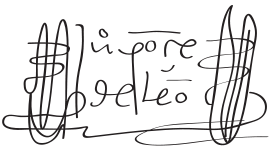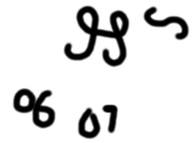Florida's Fountain of Youth: Likely Origins of the Legend
According to tradition, the natives of Hispaniola, Puerto Rico and Cuba told the early Spanish explorers that in Bimini (Beniny), a land to the north, there was a river, spring or fountain where waters had such miraculous curative powers that any old person who bathed in them would regain his youth. About the time of Columbus's first voyage, says the legend, an Arawak chief named Sequene, inspired by the fable of the curative waters, had migrated from Cuba to southern Florida. It seems that other parties of islanders had made attempts to find Bimini, which was generally described as being in the region of the Bahamas.
Juan Ponce de Leon (1460-1521), who had been with Columbus on his second voyage in 1493 and who had later conquered and become governor of Puerto Rico, is supposed to have learned of the fable from the Indians. The fable was not new, and probably Ponce de Leon was vaguely cognizant of the fact that such waters had been mentioned by medieval writers, and that Alexander the Great had searched for such waters in eastern Asia. A similar legend was known to the Polynesians, whose tradition located the fountain of perpetual youth in Hawaii.
As described to the Spanish, Bimini not only contained a spring of perpetual youth but teemed with gold and all sorts of riches. The fact that the party of Arawaks who had gone in that direction had never returned was taken as evidence that they must have found the happy land!
In that age of discovery, when new wonders and novelties were disclosed every year, not only the Spanish explorers but also men of learning accepted such stories with childlike credulity. Pietro Martire d'Anghiera (1472-1528), an Italian geographer and historian who moved to Spain in 1487 and who is known as "Peter Martyr" wrote to Pope Leo X in 1513: "Among the islands of the north side of Hispaniola, there is about 325 leagues distant, as they say who have searched the same, in which is a continual spring of running water, of such marvelous virtue that the water thereof being drunk, perhaps with some diet, maketh old men young again." The chronicler himself discounted the tale, but he told his Holiness that "they have so spread this rumor for a truth through all the court, that not only all the people, but also many of them whom wisdom or fortune hath divided from the common sort, think it to be true."
Ponce de Leon, who had become wealthy in the colonial service, equipped three ships at his own expense and set out to find the land of riches and perhaps the mythical fountain that would restore his health and make him young again. It is a common, mistake to suppose that he was then an old man. He was only about fifty-three.
Ponce de Leon, like most of the other early Spanish explorers and conquerors, was looking primarily for gold, slaves and other "riches," and it is not likely that he actually put much stock in the fable of the fountain of youth, if he had heard about it at all.
That fable was not associated with de Leon's name until long afterwards, when Hernando de Escaiante de Fontaneda told it in his account of Florida. In 1545 Fontaneda, at the age of thirteen, was shipwrecked on the coast of Florida and spent seventeen years as a captive of the Indians. He was finally rescued, probably by the French in northeastern Florida, and later returned to the peninsula as an interpreter for Menendez in 1565. Antonio de Herrera y Tordesilias (1540?-1625) had access to Fontaneda's manuscript and incorporated the story in his history of the Indies.
Whether any Europeans had visited Florida before Ponce de Leon's first expedition is not known for certain. Some authorities suppose that both John Cabot and Amerigo Vespucci had explored and mapped part of the coast. At any rate, Alberto Cantino's Spanish map of 1502 indicated a peninsula corresponding to Florida.
On March 27, 1513 (not 1512 as often stated), after searching vainly for Bimini among the Bahamas, Ponce de Leon sighted the North American mainland, which he took to be an island, and on April 2 he landed somewhere on the eastern coast. Nobody knows for certain where he first set foot on Florida soil. Some suppose that it was north of St. Augustine, while others think it was as far south as Cape Canav- eral. Either because the discovery was made during the Easter season, or because he found flowers on the coast, or for both reasons, he named the country La Florida. In Spanish, Easter Sunday is la pascua florida, literally "the flowery passover." "And thinking that this land was an island they named it La Florida because they discovered it in the time of the flowery festival."



